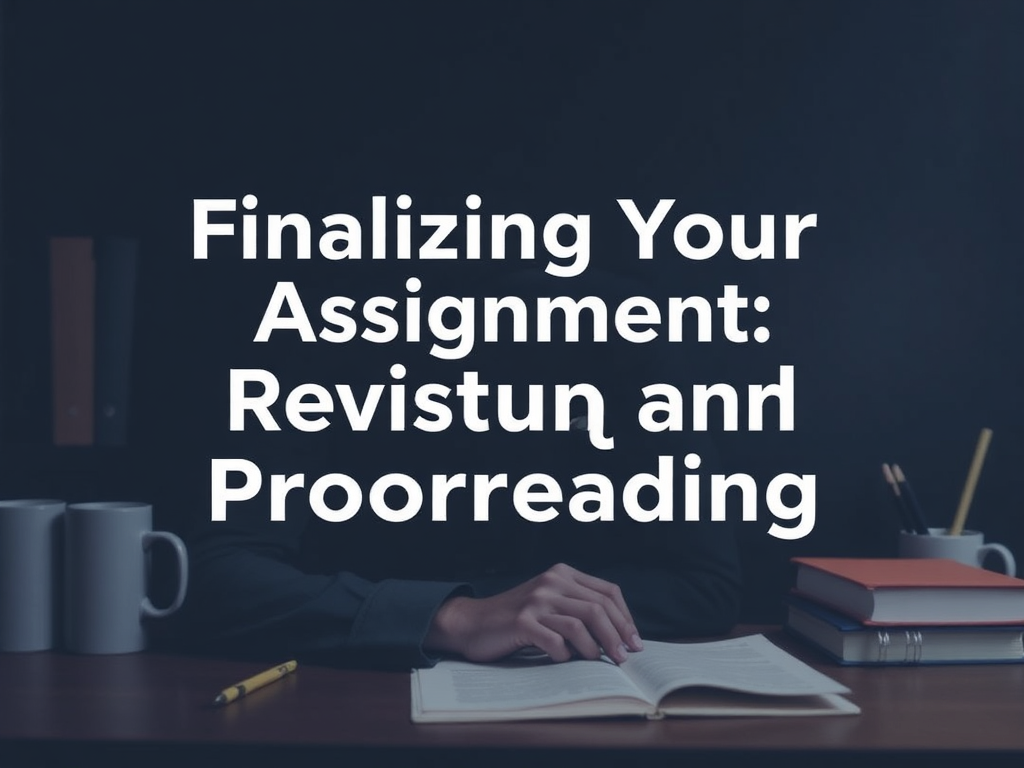Crafting a well-structured academic assignment demands a clear understanding of its components. Analyzing the brief is crucial to pinpoint key task, topic, and limiting words. This approach ensures that content aligns seamlessly with learning objectives and assessment criteria. Managing time and resources efficiently is essential for delivering a coherent and polished final submission.
Key Takeaways:
- Analyze the assignment brief to identify task, topic, and limiting words for straightforward direction.
- Ensure the assignment meets learning objectives and assessment criteria to satisfy educator expectations.
- Manage time effectively and plan in detail to remain organized and minimize stress.
- Construct a clear outline with a defined introduction, body, and conclusion.
- Revise rigorously, proofread thoroughly, and follow submission guidelines for a polished final product.
Structuring an Academic Assignment: Mastering the Basics
Carefully analyzing the assignment brief is crucial. It sets the foundation. Start by identifying task, topic, and limiting words. Task words often tell you what action you’ll need to take, like “compare” or “analyze.” Topic words help pinpoint the main subject of your assignment. Meanwhile, limiting words narrow the scope, such as a specific time frame or geographical focus. Each component helps clarify the assignment direction.
Understanding the learning objectives and assessment criteria is equally important. They guide your content and structure, ensuring alignment with what educators expect. Keep an eye on the following:
- Assignment Guidelines: These lay out the requirements, such as format, word count, and any specific sections to include.
- Learning Objectives: These objectives explain what you’re expected to learn and demonstrate through the assignment.
- Assessment Criteria: Criteria provide insight into how your work will be evaluated, highlighting what is valued in your response.
Prompt analysis integrates all these elements. Recognizing task, topic, and limiting words within the brief and aligning them with the learning objectives and assessment criteria enables a structured approach. It’s all about connecting the dots. So, go through the assignment prompt thoroughly, paying close attention to these aspects. This method not only ensures coherence but helps stay focused, ultimately smoothing the path to academic success.
Planning and Efficient Time Management
Allocating your time effectively can transform your approach to academic assignments. Start by using tools like calendars and planners. They help track progress and set clear goals. Integrating these tools into your routine aids in visualizing deadlines and ensuring nothing slips through the cracks.
Setting mini-goals has a huge impact on productivity. They divide large tasks into manageable chunks and make it easier to see incremental progress. Consider these steps to enhance your planning:
- Create a to-do list for daily tasks that align with larger goals.
- Allocate specific time slots for each task to prevent last-minute rushes.
- Use color-coding in planners to differentiate between tasks, making them easy to identify.
- Review and adjust plans daily to keep abreast of any unexpected changes.
By keeping a strong focus on time management and setting achievable targets, you won’t just meet deadlines—you’ll excel. Approaching tasks with a strategic mindset ensures that you complete assignments not only on time but also to a high standard. Scheduling ensures that each task receives the attention it deserves.
Leveraging these techniques will boost your efficiency and reduce stress as you tackle academic work.
Conducting Research and Taking Notes
Effective research starts with using credible academic sources. Reliable sources include journals, books, and official publications. Use the assignment’s keywords to steer research. They help pinpoint relevant evidence and refine focus. As you gather sources, keep detailed notes. Note-taking is crucial to organize thoughts and track evidence. It ensures clear understanding and recall of information. Record citations meticulously for easy referencing later. Use citation management tools like EndNote or Zotero for efficiency. These tools save time and improve accuracy in citation and bibliography creation. Here’s a quick way to power up your research methods:
- Use keywords to refine online database searches.
- Note page numbers and key points from each source.
- Create a digital or physical system to track sources and citations.
Remember, clear citation records reduce errors and academic pitfalls.

Creating an Outline and Structuring Your Assignment
Crafting a solid outline forms the backbone of any academic assignment. Start by identifying three main parts: introduction, body, and conclusion. This roadmap helps shape a clear structure for your work. In the introduction, present your main thesis and objectives that guide the reader. For the body, divide your content into sections or paragraphs that explore distinct points, ensuring they support the thesis. Group similar ideas together and use transitional phrases to ensure a smooth progression of thought.
To maintain a logical flow:
- Begin with a broad introduction, narrowing down to your thesis.
- Develop each body section around one central idea.
- Conclude by summarizing key points and restating the thesis briefly.
Staying organized and consistent with this structure ensures clarity and coherence, making your argument easy to follow.
Drafting: From Outline to First Draft
Building a strong first draft hinges on creating a captivating introduction. Start by introducing the main topic and present the thesis clearly. This sets the stage for your argument and guides your reader.
Dive into the body paragraphs with focused topic sentences. These sentences should align with your thesis and set the tone for the paragraph. To bolster your arguments, incorporate evidence such as statistics, quotes, or research findings. Always follow with your analysis to demonstrate understanding and relevance. Make sure your interpretations are clear and tie back to your thesis.
Seamless transitions between paragraphs maintain the flow of your piece. They help readers understand how one point evolves to the next, keeping them engaged. Words and phrases like “however,” “furthermore,” and “in contrast” can be useful here.
End with a strong conclusion that restates your thesis without merely repeating it. Synthesize your main insights and showcase their significance. This reinforces your argument and leaves a lasting impression on the reader.
In summary, drafting a compelling academic assignment involves crafting an engaging introduction, constructing coherent body paragraphs with evidence, and weaving them together with effective transitions. Finish with a conclusion that ties everything together, ensuring a cohesive and compelling piece.
Finalizing Your Assignment: Revising and Proofreading
After drafting, it’s crucial to review your assignment for logical flow and clarity. Ensure each section transitions smoothly into the next. Address grammar and style by checking for errors and refining your tone. Verify that all references comply with the required formatting style. Proofreading is an essential final touch, catching errors that might’ve been missed earlier.
Key steps in the revision process:
- Conduct multiple rounds of revision to polish your draft.
- Look for consistency in grammar and style.
- Confirm that references are correctly formatted and complete.
- Perform thorough proofreading to catch spelling and punctuation mistakes.
Integrating these steps ensures that your assignment is clear, concise, and professionally presented.

Final Submission: Ensuring Completeness and Compliance
Before hitting the submit button, take a moment for a final check to ensure your assignment is complete and compliant with all guidelines. Start with formatting. Verify that you’ve adhered to the prescribed style: font type, size, and margins should match the required standards.
Remember, supplementary documents can be crucial. If your assignment requires supporting documents, such as an appendix, bibliography, or cover sheet, double-check these are in place. They should be organized logically and in line with instructions.
Compliance with submission guidelines is non-negotiable. Examine the submission portal requirements. Are you uploading in the specified file format? Check instructions for any specific naming conventions for the file. Correct file names show professionalism and attention to detail.
Timeliness is your ally. Submissions after the deadline often face penalties or rejection. Aim to submit ahead of time to avoid last-minute technical hitches or unforeseen delays.
Here’s a handy checklist to finalize your submission:
- Confirm the document’s formatting (font type, size, and margins).
- Attach any required supplementary documents.
- Ensure file format and naming meet the required guidelines.
- Verify compliance with submission platform requirements.
- Submit before the deadline to avoid penalties.
Taking these steps ensures your submission is complete and meets all guidelines. It’ll reflect your diligence and dedication to quality work.
Sources:
York University – Academic Writing
Thesify – Step-by-Step Academic Writing Guide: Breaking Down Every Task for a Successful Final Draft
Wordy – Writers’ Workshop: Steps and Tips for Completing an Academic Assignment
DoMyEssay – How to Write an Assignment
University of Northampton – Writing an Assignment: Essentials – 10 Steps
Scribbr – Writing Process
University of Queensland – Steps for Writing Assignments

One Comment
[…] Organizing Your Term Papers and Reports […]